Inside Microsoft's Surface RT Tablet
by Anand Lal Shimpi on October 16, 2012 11:00 AM ESTAlong with the first pricing and availability details, Microsoft gave us some additional insight into Surface in a tour of the design and engineering facility where the project was first hatched.
Microsoft wasn’t specific about when work began on Surface other than to say that the company was thinking about what it needed to do to bring Windows 8 to market around the time Windows 7 was completed in the summer of 2009. The decision was made early on to bring a first party device to market that would be an extension of Windows 8. It was from that concept that Surface first emerged.
The design group that eventually created Surface started with the most simple of inspirations: a Moleskine notebook. Although Surface and its Type/Touch Covers make ample use of magnets (both for the kickstand and connecting the covers to the tablet), you’ll notice that there are no magnets holding the non-hinged side of the cover in place. According to Microsoft, it wanted to deliver a true book-like feel and the added resistance of having to overpower a magnet to open the cover of your tablet ruined that goal.
In the creation of Surface Microsoft was laser focused on eliminating so called scary interactions. Every physical interaction with Surface needed to be confident and consistent. From the kickstand to the interface between the covers and the tablet, Microsoft wanted everything to feel very solid. What Microsoft hoped would set Surface apart is its ability to quickly and confidently transform between multiple operating modes (tablet, notebook, standing display, covered display). In pursuit of that goal it put tremendous focus on build quality and materials choices. We’ve seen a resurgence in focus on build quality in recent years, but that’s typically simply to improve device feel - with Surface, having excellent build quality was needed to enable functionality. Users wouldn’t be likely to switch between various usage modes with the Touch Cover if doing so felt like you were going to break the device.
Microsoft’s efforts to guarantee a solid and consistent physical experience with Surface started on the manufacturing side but extended all the way through long term testing. The kick stand should always operate with the same feel and noise for the life of the device, the same is true for the covers.
Microsoft claims it invested heavily in the VaporMg (vapor-mag) injection moulded magnesium process that it uses to create Surface’s chassis. The end result is a unique combination of strength, weight and surface feel. Despite the relatively common sounding name, Surface doesn’t feel like any other portable device as a result of Microsoft’ VaporMg.
Design Evolution
10.6-inch Surface RT final (left) vs. 10.1-inch Surface RT concept (right)
When Surface launched, we commented on the relatively unusual 10.6-inch diagonal display size. Microsoft told us that it originally targeted 10.1-inches for Surface however it resulted in a considerably more cramped multitasking experience, as well as the impact on the Touch Cover keyboard side drove the need for a larger display. Microsoft also considered going with an 11-inch display but eventually settled on 10.6-inches as the perfect balance of productivity and portability.
Microsoft iterated through hundreds of designs, making heavy use of in house polyjet 3D printers to rapidly prototype concepts. Features like determining the position of the sole USB port on Surface benefitted from the 3D printers. Microsoft is particularly proud of Surface’s USB port and is quick to point out that it’s a custom port, color matched to the rest of the chassis and with the same angle as the rest of the chamfer.
Just as important as the Surface tablet itself was the creation of the Touch and Type Cover designs. Microsoft was similarly focused on prototyping and arriving at the perfect cover. Unlike at the Surface launch event, Microsoft did allow us to type on the Touch Cover although I’ll refrain from coming to any conclusions about the keyboards after only a few minutes of use.
Beneath the Surface
Microsoft gave us a look into a teardown of the Surface tablet. Very focused on WiFi reception Microsoft included two antennas connected to a Marvell 2x2:2 WiFi solution (88W8797?). The antennas are routed to the left and right of the front facing camera and are behind RF windows on both sides of the tablet to ensure RF passes through as unimpeded as possible.
The Tegra 3 SoC appears to be paired up with two off-package DRAM devices. I couldn’t get a good look at the rest of the components in the design although I did see a few Atmel chips (touch controllers perhaps?).
Surface’s ClearType HD Display
Although Surface RT only ships with a 1366 x 768 panel, Microsoft was quick to point out that there’s more to display quality than pure resolution. Surface’s 10.6-inch panel features an optically bonded LCD and cover glass stack, similar to what we’ve seen in most modern, high-end smartphones. Optical bonding is expensive to do and not as common in large tablet panels, but Microsoft believes it can do so at reasonable yields on Surface.
The optically bonded cover glass + LCD stack reduces internal reflections, thus reducing glare and increasing light transmission.
One clever trick is that Microsoft, through various coatings, index matches between the touch sensor’s ITO (Indium Tin Oxide) array and the cover glass, once again in pursuit of fewer reflections.
Microsoft claims it’s also very focused on delivering a well calibrated panel with Surface, although we’ll have to wait and put those claims to the test ourselves.
Final Words
Most of what we’ve heard about how Surface isn’t unusual, after all it’s what you’d expect from a great device company. That in itself is the big takeaway however -Microsoft has transformed itself into a focused device maker and not just a software company.
Surface RT will be available on October 26th starting at $499 for the 32GB model with Office 2013 Home & Student edition. Once devices are available we’ll be sure to follow up with a full review.


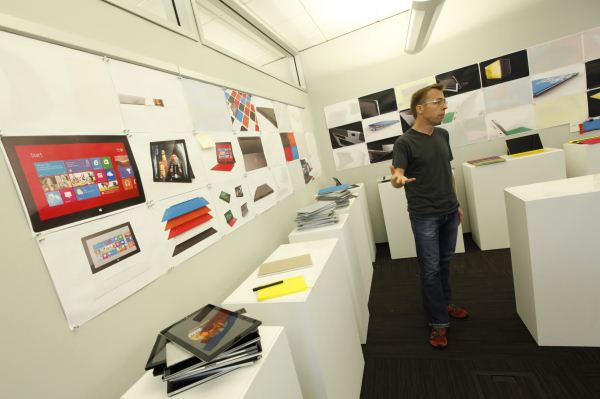

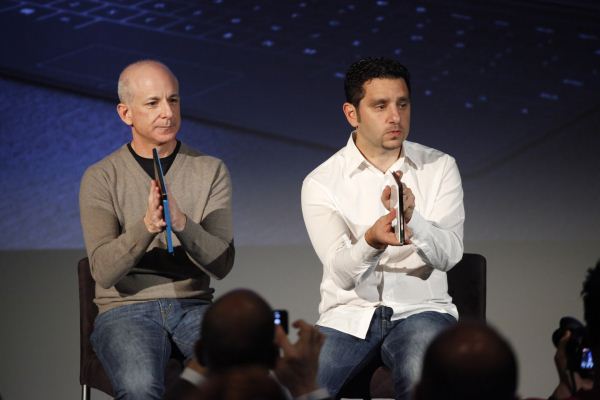
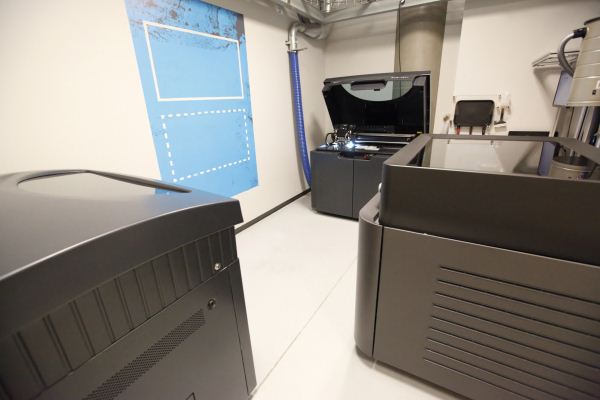
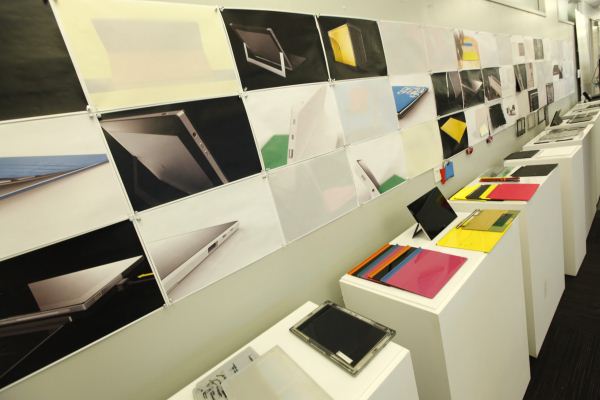
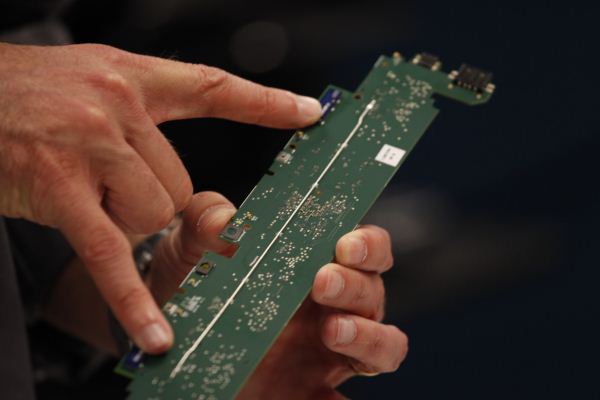
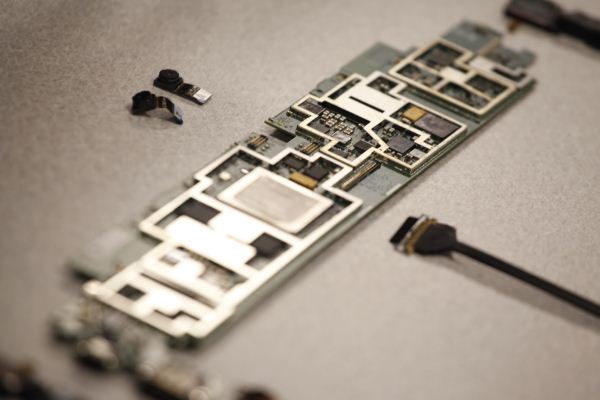





















73 Comments
View All Comments
extide - Tuesday, October 16, 2012 - link
Microsoft gets it! People want something that is QUALITY! I think this device will have a huge impact. :)yannigr - Tuesday, October 16, 2012 - link
Yes, a negative one in Microsoft's financials. The prices that I see today are like this is an Apple device. It is not. Microsoft is going to learn the hard way why you can't pretend to be Apple when you are not Apple. It doesn't matter if you are equally famous or big. Only Google realized that.Just to be clear. I am not an Apple fanboy. And I am not an Android fanboy. My smartphone is a windows phone and I only have PCs. Also love Firefox. But surface is going to fail.
extide - Tuesday, October 16, 2012 - link
I think it's a bit premature to call it a failure. We will have to wait and see. Honestly I don't think people really care what brand stuff is as long as it is the nice/cool/new/hot thing on the market. If they advertise this right then I have little doubt it will at least do pretty well.headbox - Wednesday, October 17, 2012 - link
I'm sure they'll sell hundreds of theseB3an - Wednesday, October 17, 2012 - link
They've already sold out of the 32GB model. 3 weeks wait now.I'm sure people will now just say it's because MS didn't make many. As if the new factory MS built just for making these things is only going to be producing 10 a week or something... Surface will sell millions.
I'll happily get a Surface RT over iPad. It's clearly HIGHER build quality too. iPad = aluminium, the weakest metal. Surface = magnesium.
HisDivineOrder - Wednesday, October 17, 2012 - link
Yeah, Transformer tablets sold out, too. iPad still dominated Android big time.Besides, I think you should wait for real reviews before stating categorically that you love the device. You may yet be surprised by the ways in which the Metro UI does not satisfy you. After all, i'd hate to have call you a MS fan boy, but someone who says, "I love the product and I will always love the product no matter what!" is dangerously close to that.
B3an - Wednesday, October 17, 2012 - link
I already have Win 8 RTM on my workstation and love the UI. I already know what i'll be getting with Surface, a much better UI than on other tablets.Wolfpup - Wednesday, October 17, 2012 - link
Shouldn't you consider waiting for Windows 8 tablets though? Even if you like Metro, you're saying you like Windows 8...which this isn't, sooo....B3an - Thursday, October 18, 2012 - link
That don't make any sense. Win 8/RT both use the exact same Metro/Modern UI, it's identical. Even the desktop is the same for the most part (minus a few features and not being able to run x86 software) but If you stick to the Modern UI on a Win 8 or Win RT tablet you literally wont be able to notice any difference between them. I'm not saying i definitely will be getting a Surface RT (i might wait for the x86/Win8 version) just that i'd easily choose Win RT over the competition.CeriseCogburn - Friday, October 26, 2012 - link
And thus the real reason is revealed...The workstation will virtually match in OS, so B3an doesn't have to learn anything different.
There you go people, it's all right there. Simple as can be, and completely valid, even if others choose some other path.